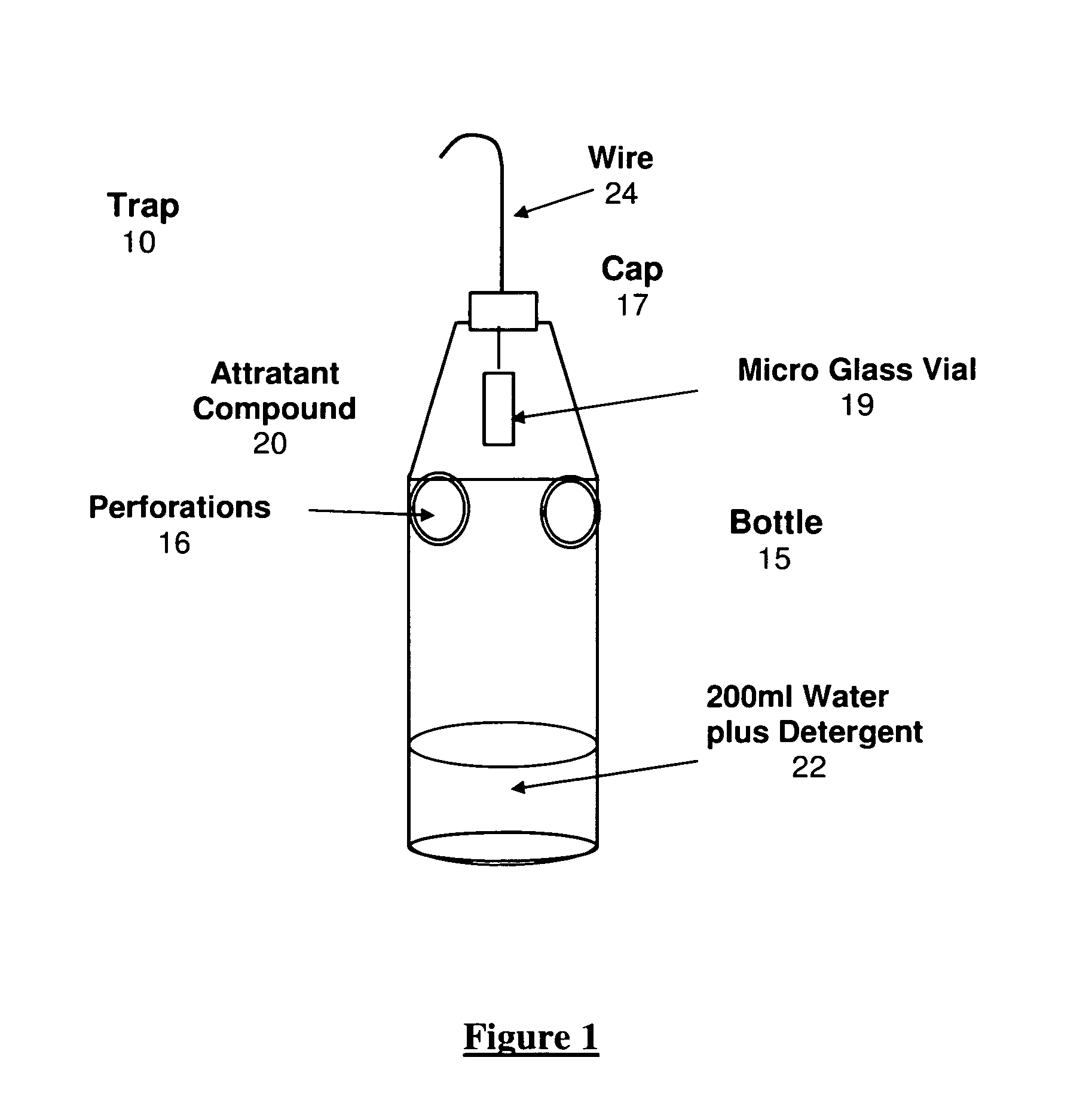Attractant compounds for yellow jacket wasps
a technology of attractant compounds and yellow jacket wasps, which is applied in the field of attractant compounds for yellow jacket wasps, can solve the problems of easy evaporation or oxidation of chemical compounds used, and not completely selective for the attraction of i>v. germanica
- Summary
- Abstract
- Description
- Claims
- Application Information
AI Technical Summary
Problems solved by technology
Method used
Image
Examples
Embodiment Construction
[0006]Attractant were evaluated in traps 10, as shown in FIG. 1, consisting of discardable plastic beverage bottles 15, of 500 ml, with two lateral openings, or perforations 16, 2.3 cm in diameter, each located at approximately the upper half of the bottle. On the top inside of the bottle, 2 cm below the cap 17, a 10 ml ‘micro’ glass vial 19 was installed. In this small container, 0.1 ml of an attractive compound 20 was deposited. In the bottom of the 500 ml bottle, 200 ml of water with liquid household detergent 22 was placed.
[0007]The traps 10 or containers with the attractant 20, were placed randomly in different species of trees, mostly ‘thorns,’Acacia cavens and Tebo, Trevoa trinervis in Catapilco, ‘wicker’ at Lo Orozco, and apple trees in Casablanca (Chile), each hung from a wire 24, at a height of about 1½ m from the ground, with a separation between them of about 10 m. Two replications were used per each attractant in Catapilco, and five replications in Lo Orozco and Casabla...
PUM
 Login to view more
Login to view more Abstract
Description
Claims
Application Information
 Login to view more
Login to view more - R&D Engineer
- R&D Manager
- IP Professional
- Industry Leading Data Capabilities
- Powerful AI technology
- Patent DNA Extraction
Browse by: Latest US Patents, China's latest patents, Technical Efficacy Thesaurus, Application Domain, Technology Topic.
© 2024 PatSnap. All rights reserved.Legal|Privacy policy|Modern Slavery Act Transparency Statement|Sitemap

